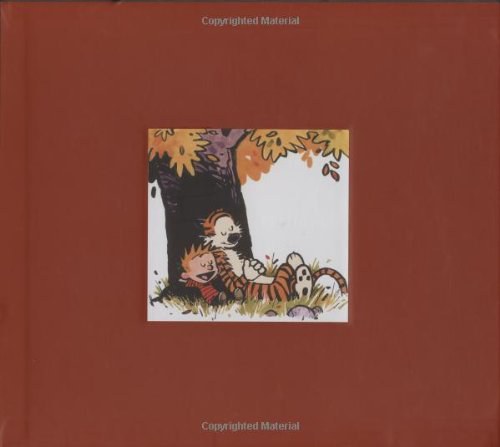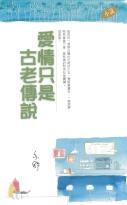
Johan Elverskog《Our Great Qing》
书刊介绍
内容简介
"In a sweeping overview of four centuries of Mongolian history that draws on previously untapped sources, Johan Elverskog opens up totally new perspectives on some of the most urgent questions historians have recently raised about the role of Buddhism in the constitution of the Qing empire. Theoretically informed and strongly comparative in approach, Elverskog’s work tells a fascinating and important story that will interest all scholars working at the intersection of religion and politics." —Mark Elliott, Harvard University
"Johan Elverskog has rewritten the political and intellectual history of Mongolia from the bottom up, telling a convincing story that clarifies for the first time the revolutions which Mongolian concepts of community, rule, and religion underwent from 1500 to 1900. His account of Qing rule in Mongolia doesn’t just tell us what images the Qing emperors wished to project, but also what images the Mongols accepted themselves, and how these changed over the centuries. In the scope of time it covers, the originality of the views advanced, and the accuracy of the scholarship upon which it is based, Our Great Qing seems destined to mark a watershed in Mongolian studies. It will be essential reading for specialists in Mongolian studies and will make an important contribution and riposte to the ‘new Qing history’ now changing the face of late imperial Chinese history. Specialists in Tibetan Buddhism and Buddhism’s interaction with the political realm will also find in this work challenging and thought-provoking." —ChristopherAtwood, Indiana University
Although it is generally believed that the Manchus controlled the Mongols through their patronage of Tibetan Buddhism, scant attention has been paid to the Mongol view of the Qing imperial project. In contrast to other accounts of Manchu rule, Our Great Qing focuses not only on what images the metropole wished to project into Mongolia, but also on what images the Mongols acknowledged themselves. Rather than accepting the Manchu’s use of Buddhism, Johan Elverskog begins by questioning the static, unhistorical, and hegemonic view of political life implicit in the Buddhist explanation. By stressing instead the fluidity of identity and Buddhist practice as processes continually developing in relation to state formations, this work explores how Qing policies were understood by Mongols and how they came to see themselves as Qing subjects.
In his investigation of Mongol society on the eve of the Manchu conquest, Elverskog reveals the distinctive political theory of decentralization that fostered the civil war among the Mongols. He explains how it was that the Manchu Great Enterprise was not to win over "Mongolia" but was instead to create a unified Mongol community of which the disparate preexisting communities would merely be component parts.
A key element fostering this change was the Qing court’s promotion of Gelukpa orthodoxy, which not only transformed Mongol historical narratives and rituals but also displaced the earlier vernacular Mongolian Buddhism. Finally, Elverskog demonstrates how this eighteenth-century conception of a Mongol community, ruled by an aristocracy and nourished by a Buddhist emperor, gave way to a pan-Qing solidarity of all Buddhist peoples against Muslims and Christians and to local identities that united for the first time aristocrats with commoners in a new Mongol Buddhist identity on the eve of the twentieth century.
作品目录
Acknowledgments
Note on Transcription
Mongol Reign Periods
Qing Reign Periods
Introduction
1. The Mongols on the Eve of Conquest
2. The Mongols and Political Authority
3. Qing Ornamentalism and the Cult of Chinggis Khan
4. The Poetics, Rituals and Language of Being Mongol, Buddhist and Qing
5. The Buddhist Qing and Mongol Localization in the Nineteenth Century
Epilogue
Notes
List of Tibetan Spellings
Chinese Character Glossary
References
Index
相关推荐
-

资本论(全彩插图精读本)
资本论(全彩插图精读本) 本书特色 《资本论》是马克思花费40年,阅读1500种书籍,整理400余本笔记的心血之作。被译为70余种文字,全球累计销售20亿册。此...
-

神州自有连城壁--中华美学特色论丛目
神州自有连城壁--中华美学特色论丛目 内容简介 本书系周汝昌先生倾其心血的一部力作,他以其深厚的学养,纵论中华美学之画艺、书学、文论、诗词曲赋、红楼艺术、音韵美...
-

心经与能量
心经与能量 本书特色 《心经与能量:修心养性 求索悟真》是整个佛学的总纲、总论、宗旨、精髓与核心。任何智者、学者,若想认识佛学之真谛,就万万离不开这个真理之源《...
-

六十如理颂-梵藏汉合校.导读.译注
六十如理颂-梵藏汉合校.导读.译注 本书特色 这本《六十如理颂(梵藏汉合校导读译注)》是中国藏学研究中心宗教所副研究员李学竹与北京大学外国语学院叶少勇对《六十如...
-

佛法与科学之比较研究
佛法与科学之比较研究 本书特色 本书为《近代名家散佚学术著作丛刊》系列图书之一。作者于佛学涉猎甚广,1928年撰成本书,融会贯通佛学与科学,引经据典,解析旧说,...
-

文化要义丛书·文化与哲学
文化要义丛书·文化与哲学 本书特色 “天行健,君子以自强不息;地势坤,君子以厚德载物。”我认为这就是中华民族五千年年延续发展的思想基础,是中华民族的基本精神。我...
-

萧振士《中国佛教文化简明辞典》
可阅读、可查找、最易读的佛学入门工具书[推荐1]打破辞典编排陈规,按照内容重新分类本书打破大部分辞典按照笔画或者历史年代编
-

马克思与恩格斯:学术思想关系
马克思与恩格斯:学术思想关系 内容简介 本书系统地论述了马克思和恩格斯在学术思想上相互影响的过程。作者认为,19世纪50年代以前,马克思和恩格斯精诚合作,恩格斯...
-

《约翰福音》书籍《约翰福音》
《约翰福音》是“摩根解经丛卷”系列之一。皮尔逊博士曾说过,我们现有的四福音的顺序,乃是遵照旧约希伯来安营的顺序。马太乃是
-

列子集释-新编诸子集成
列子集释-新编诸子集成 本书特色 《新编诸子集成:列子集释》所收子书与旧本诸子集成略同,是一般研究者经常要阅读或查考的书。每一种都选择到目前为止较好的注释本,有...
-

本体论批判
本体论批判 内容简介 面对灏翰飘缈的星河,神妙奇特的生命,变幻莫测的社会,人类自身的自由与宿命,人们有无尽的暇思,古今中外都有无数的探索者在这些问题面前孜孜以求...
-

通识中国哲学
通识中国哲学 本书特色 《通识中国哲学》通过一些生活中的小故事,阐述儒、道、墨、法、释五大中国传统哲学流派的主要观点,为我们提供多元的思考角度,睿智处理人生和社...
-

医易智慧生命与八卦
医易智慧生命与八卦 内容简介 本书是周易与中医智慧丛书之一,是一部关于周医医学思想的理论专著。笔者通过对历代医家有关医易学说的研讨探微,基本掌握了医易学说的原理...
-

感觉的分析
感觉的分析 本书特色 本书包括导言、论成见、我和阿芬那留斯以及其他科学家的关系、感官研究的主要观点、眼镜的空间感觉、对空间感觉的进一步研究等内容。感觉的分析 内...
-

马克思恩格斯箴言
马克思恩格斯箴言 本书特色 本书编选组立足于当代中国特色社会主义文化建设,为展示马克思主义经典作家的宽广视野和博大情怀,从手稿、书信等珍贵文献中精选了马克思、恩...
-

沉思录
沉思录 内容简介 这是一位有着强烈道德感的统治者的内心独白,是一部写给自己看的书,是自己与自己的12篇对话。书中,奥勒留考察了自然与社会的关系、宇宙与人生的关系...
-

雅典娜神殿断片集
雅典娜神殿断片集 内容简介 这里选译的施氏三部《断片集》,论神话的对话及四篇书评,是施勒格尔*重要的理论著作,从中可以了解他本人及德国早期浪漫派的基本思想,和他...
-

论语别裁-(全二册)
论语别裁-(全二册) 本书特色 由孔子的弟子及其后学编集的《论语》,是一部记载孔子言语行事的重要儒家经典。 自西汉以来,《论语》所表述的孔子学说,迅速扩展,其影...
-

朱子家训.颜氏家训.孔子家语-最新经典珍藏
朱子家训.颜氏家训.孔子家语-最新经典珍藏 本书特色 朱子家训《朱子家训》亦称《朱子治家格言》,简称《治家格言》。作者朱用纯,字致一,自号柏庐,江苏昆山...
-

喬秀岩《義疏學衰亡史論》
「我有屬於我自己的一顆星星。」作者三十三歲撰寫此書,充滿悲劇感。二劉鄙視南北朝義疏學的遊戲規則,傳統學術竟失立足之地。清





